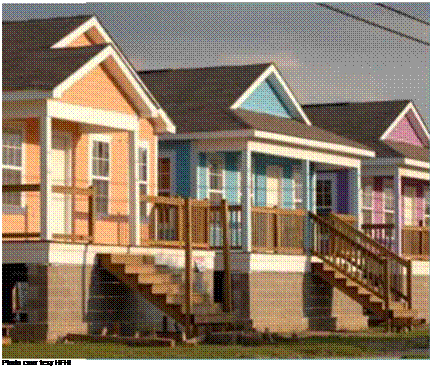Install ridge shingles and the ridge vent
At the ridge, many builders install ridge shingles on the roof ends with a ridge vent between them. An alternative is to install the ridge vent across the entire roof, even though the ends of the vent (located over the gable-end overhangs) are not functional. Some ridge vents do not require a cap of roof shingles, but others do. No matter which type of ridge vent you use, follow the manufacturer’s instructions regarding its installation (see the top right photo on p. 143).
Ridge shingles are easy to make—simply cut regular three-tab shingles into three pieces, as shown in the bottom right photo on p. 143. Lay the shingle upside-down on a piece of plywood and cut it with a utility knife. Start at the top of a slot and angle inward slightly in both directions toward the top of the shingle, cutting out a small triangle of waste. These shingles cover the ridge at both ends of the roof and are overlapped to show a 5-in. reveal, just like regular shingles. The angled portion of each ridge shingle is covered by the exposed part of the next shingle.
To ensure that both the ridge shingles and the ridge vent are installed straight, I like to snap a blue chalkline about 5 in. to 6 in. down one side of the ridge. No one but the eagles may see this, but it only takes a couple of minutes to do it correctly, and it’s important to develop good habits. Fasten the ridge shingles securely with L/2-in. roofing nails. Some ridge vents must also be installed with long nails. Cover exposed nail heads with a good-size dab of roofing tar.
Nice work! This peak experience gives the house its most important protection from the elements. When a roof is installed properly, you don’t have to worry about it for a long time.

![]()
 Habitat
Habitat
"111 for Humanity®
Before Katrina hit, Habitat affiliates in the Gulf were building 60 houses a year. After the storm, those same groups were building that many houses in a month! Mobilizing some 70,000 volunteers in the storm’s aftermath, Habitat for Humanity has completed or begun construction on more than 1,200 homes as of this writing in the Gulf Coast, and there’s no end in sight.
In New Orleans, hit hard by the hurricane, the New Orleans Area Habitat for Humanity is playing a key role in rebuilding their city. It has expanded its operations in many parishes outside the city, including St. Bernard parish, which sustained damage to nearly every structure within its limits,
and is also committed to the development of the celebrated Musicians’ Village.
Seeing hundreds of Crescent City musicians lose their homes and livelihoods because of the storm’s devastation, singer Harry Connick Jr. and jazz saxophonist Branford Marsalis teamed up with Habitat to do something about it.
Designed to foster the sounds and songs that make New Orleans unique, the Musicians’ Village consists of single-family homes and duplexes that will house musicians as well as residents who want to be part of this musically inclined neighborhood. To top it off, the Ellis Marsalis Center for Music is being built in the heart of the community. Part performance hall, part teaching facility, the center’s goal is to bring musicians young and old together to celebrate the rich musical heritage of New Orleans.
After so much devastation and upheaval, restoring New Orleans will not happen overnight. But if the joint efforts of Habitat and the city’s citizens are any indication, the spirit of the city is alive and singing. —Dave Culpepper
|
|
|
і |







Leave a reply